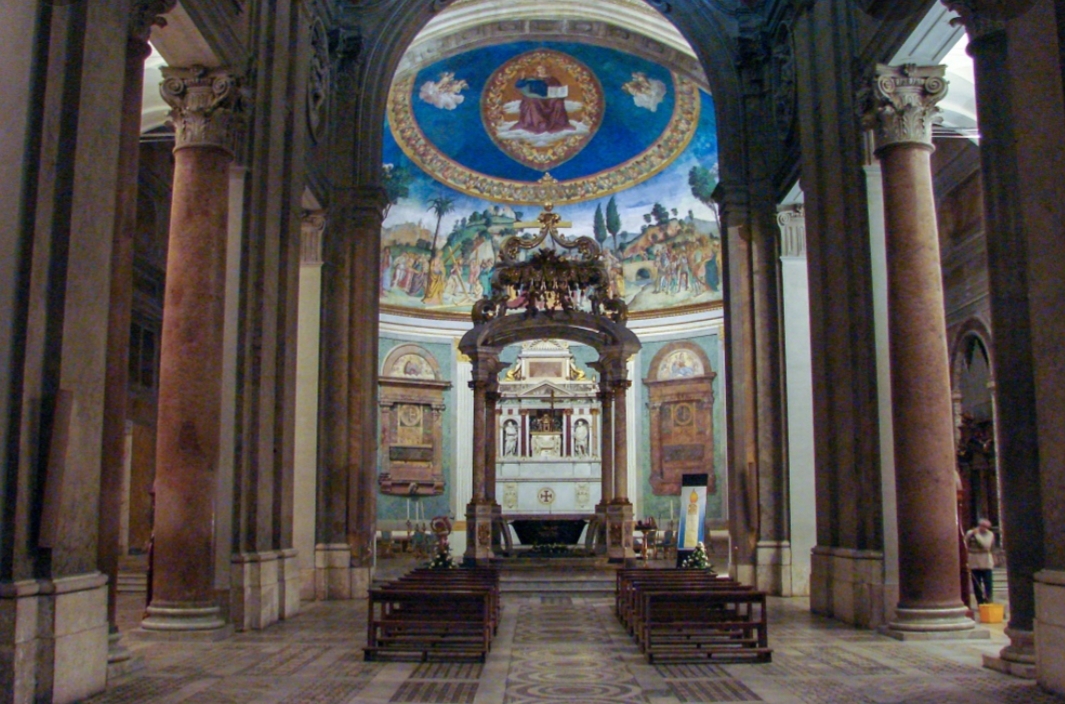
On Good Friday on April 10 when the Catholic Church commemorates the crucifixion and death of Jesus Christ, the official stational church for Lent in Rome is the Basilica di Santa Croce in Gerusalemme.
The church’s importance is eponymously apparent: It houses the relics of the cross of Christ said to have been found by Saint Helena, the mother of Constantine, during her Holy Land pilgrimage. Thus it is the Church of the Holy Cross in Jerusalem.
Santa Croce is one of the Seven Pilgrim Churches of Rome, which are traditionally toured by pilgrims taking part in the Seven Church Walk during Lent (similar to the Visita Iglesia), along with the four major basilicas (St. Peter’s, Santa Maria Maggiore, Lateran, St. Paul Outside the Walls), and the papal basilicas of San Lorenzo Martir and San Sebastian (the last replaced during the 2000 Jubilee by the Sanctuary of Our Lady of Divine Love, which has not however caught on with pilgrims who insist on going to San Sebastian).
But of course given the coronavirus global pandemic, Santa Croce and the rest of the stational churches will be bereft of pilgrims and even their parishioners. Pope Francis, in fact, will celebrate Good Friday Mass at St. Peter’s Basilica but “without the gathering of people,” according to a Vatican statement. The Pope’s Lenten observances will all be digital celebrations.

Given the restrictions on public assembly, Catholic devotees could make a virtual tour of the Seven Pilgrim Churches via several well-designed websites. And those who have been to any or all of them may recollect their memories and share them with family and friends.
Not known
Although Santa Croce may be known to pilgrims and devotees, many visitors of Rome do not know about it. Back when there was a dearth of internet information about Santa Croce, I discovered the church through my Italy-based cousin whose job at that time was to tour via his van Philippine Catholic pilgrims around key shrines in Europe. While I was very familiar with the four major basilicas, I didn’t know of the other “papal basilicas” like Santa Croce that are considered central to the seat of the Latin Church.
Santa Croce in Gerusalemme is just a short walk from San Giovanni in Laterano or the Lateran major basilica, the cathedal of the pope as bishop of Rome. Santa Croce is in the Esquilino quarter, one of the so-called Seven Hills of Rome, near the Aurelian walls; it is therefore like Intramuros, “inside the walls,” and is considered a city center among several city centers in the vast geography of the Eternal City, which is 10 times bigger than Paris.

During Pax Romana, the site where the church now stands used to be the Sessorian Palace, which was part of a vaster imperial complex. Empress Helena (circa 255-330) converted it into a chapel but not before dispersing the soil of Calvary in the construction site, literally a ground-laying, if there was one, for the True Cross.
Some time later, the chapel was converted into a basilica called the Heleniana. It fell into disuse much later. In the 12th century, Cardinal Gherardo Caccianemici dal Orso (later Pope Lucius II) when he was cardinal-priest of Santa Croce renovated the basilica and gave it a Romanesque facade. Modifications were further made in the following centuries, topped off by the changes wrought by Pope Benedict XIV in the 18th century; he provided the current Baroque appearance of the church.
Inside, noteworthy would be the frescoes in the apse said to have been done by early Renaissance painters Antoniazzo Romano (1430-1510) and Marco Palmezzano (1460-1539).
Despite its current baroque design, features from earlier eras remain present here and there, particularly the mosaics, the target of a comprehensive restoration plan of the World Monuments Fund.
But of course, the foremost concern now as then remains the authenticity of the relics the church holds.
Chapels
The original Chapel of St. Helen could be reached down a flight of stairs to the right of the Baroque altar. It has two rooms: one has the Roman-era statue of St. Helen holding the cross. Beneath the statue is the floor said to be where soil from the Holy Land was supposedly dispersed. In the second room is said to be a 4th century inscription to St. Helen on the base of a statue. (I didn’t notice this during my visit.)
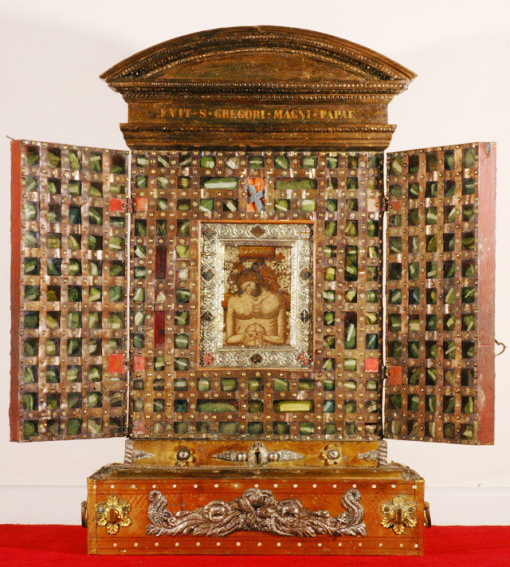
Adjacent to the chapel is the Chapel of St. Gregory the Great built at the turn of the 16th century. The altar contains a beautiful reliquary, designed as a triptych with a mosaic of Christ at the center said to have been made in the 13th or 14th century. The image is said to be the same that Pope Gregory I (540-604) saw in a dream (perhaps this should explain why the chapel was named after him). The reliquary is said to contain 200 relics. Those attending a Mass there will be granted a plenary indulgence, according to a decree by the Council of Trent.
The Gregorian chapel reliquary is separate from the Chapel of the Passion Relics (or Chapel of Holy Relics) that could be reached at the top of the wide staircase off the left aisle of the church. Making one’s way to the to the chapel one would notice the Stations of the Cross flanking the stairs; they’re meant to symbolize the journey to Calvary of Christ. The relics included wood fragments from the Cross and the nails used during the Crucifixion. They’re the most important relics for devotional purposes. Whether they’re authentic is a bone of contention among scholars for centuries.

Bishop Eusebius of Caesarea, whose ecclesiastical history written in the fourth century is the earliest of its kind and gives an account of the church from the apostolic era, has written about the finding of the tomb of Christ in his “Life of Constantine.” But he is silent about the alleged finding of the true cross by Helena.This is very strange considering that he was the official historian of Constantine. And he must have met empress when she made her pilgrimage to the Holy Land in first quarter of the fourth century.
‘Invention’
But toward the end of the fourth century not long after Eusebius’ death in 339, accounts of the “Invention of the Holy Cross” begun to crystallize.
St. Cyril of Jerusalem (331-386) wrote a letter to the Emperor Constantius, Constantine’s son and successor: “The saving wood of the cross was found at Jerusalem in the time of Constantine.” In a homily he wrote, “He was truly crucified for our sins. For if you would deny it, the place refutes you visibly, this blessed Golgotha, in which we are now assembled for the sake of Him who was here crucified; and the whole world has since been filled with pieces of the wood of the Cross.”
In 395, St. Ambrose of Milan in a funeral oration for Theodosius mentioned the emperor’s Christian predecessors such as Constantine and his mother Helena, “of sacred memory”: “She opened up the earth, scattered the dust and found three crosses in disarray.” Ambrose added Helena also found the nails of the crucifixion, which she allegedly sent to her son.
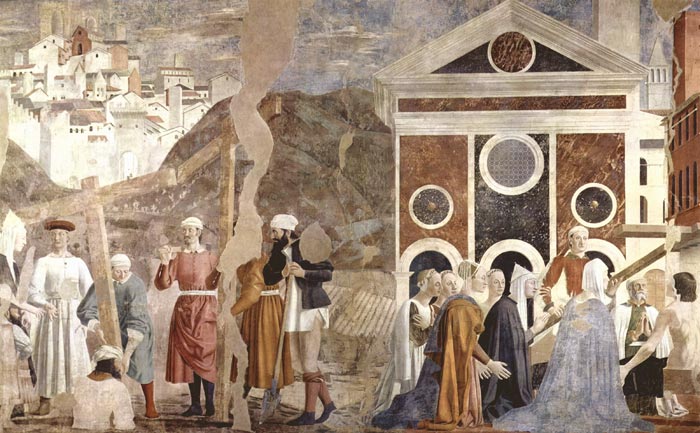
Key ecclesiastical historians in the fifth century such as Socrates Scholasticus, Sozomen and Theodoret also gave accounts of the finding of the cross.
By the Middle Ages, the “Invention of the True Cross” had fully captured the imagination of the Christian world.
‘Legend’
In the 13th century, Blessed Jacobus de Voragine, the Dominican friar-scholar and archbishop of Genoa who wrote the medieval bestseller, “The Golden Legend,” even traced the cross of Christ to the “tree of knowledge of good and evil” in the garden of Eden. Having yielded evil and bad fruit for the world after the sin of Adam and Eve, it was supposedly cut down and its lumber passed on to different hands and uses across time until it became the tree of Golgotha that bore the good fruit of salvation.
So detailed was Jabobus’ history of the Cross that it influenced the popular medieval mind as shown by Pierro della Francesca’s acclaimed series of frescoes created in the mid-15th century at the Basilica of Saint Francis in Arezzo, Italy—“The Legend of the True Cross.”
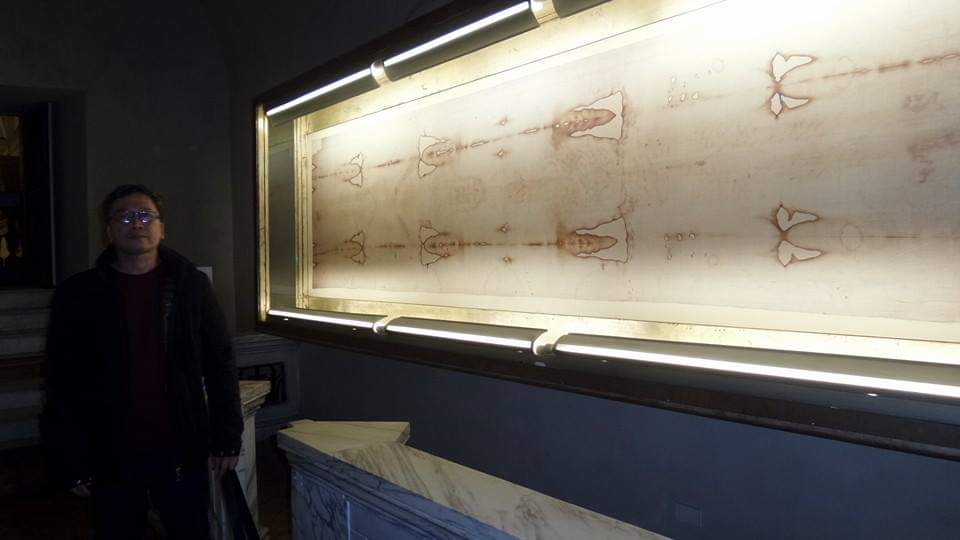
Scholars and nonscholars have since derided the “legend” of the true cross, but accounts like Jacobus’ are drawn from earlier accounts and “legends.” In fact, Jacobus called his work a “compilation.”
Moreover, the word “legend” is taken pejoratively nowadays the way people would negatively understand “myth.” “Legend” simply means “life” or “story”; as in “Lives of Saints” or the other English rendition of Della Francesca’s frescoes, “The History of the True Cross.”
Similarly, moderns scoff at the “Invention of the True Cross” in ancient accounts. They should be reminded that “Invention” simply means “discovery.”
Therefore, accounts of the Cross are drawn from earlier histories and accounts (perhaps some apocryphal, perhaps some have already vanished), which may establish their archeological fidelity to truth or what post-moderns may call as “archeology of knowledge,” with all the “rupture” or “discontinuity” that phrase may imply. Whatever gap or breach, inconsistency or uncertainty in the narrative or discourse is bridged by faith. At the least for Catholic purposes, the accounts by Blessed Jacobus and others should establish firmly the devotional history of the True Cross.
‘Titulis Crucis’
That such “legends” or “inventions” are important could be underscored by a wood fragment with the inscription “Nazarene” that was found in 1492, a generation after Della Francesco painted his frescoes. The inscription found was a fragment written in Hebrew, Latin and Greek, which that was sealed behind a brick with the words “Titulus Crucis” or Title of the Cross. The brick itself was discovered stuck in a mosaic wall at Santa Croce while repairs were being done.
Many derided the “invention” as a medieval forgery, but the discovery in the 19th century of the Holy Land account by the 4th century Spanish pilgrim Egeria mentioned the veneration of the Titulis Crucis.
Attending the Good Friday rites by the “bishop of Golgota,” Egeria (or Etheria) wrote: “a silver-gilt casket is brought in which is the holy wood of the Cross. The casket is opened and (the wood) is taken out, and both the wood of the Cross and the title are placed upon the table. And as all the people pass by one by one, all bowing themselves, they touch the Cross and the title, first with their foreheads and then with their eyes; then they kiss the Cross and pass through.”
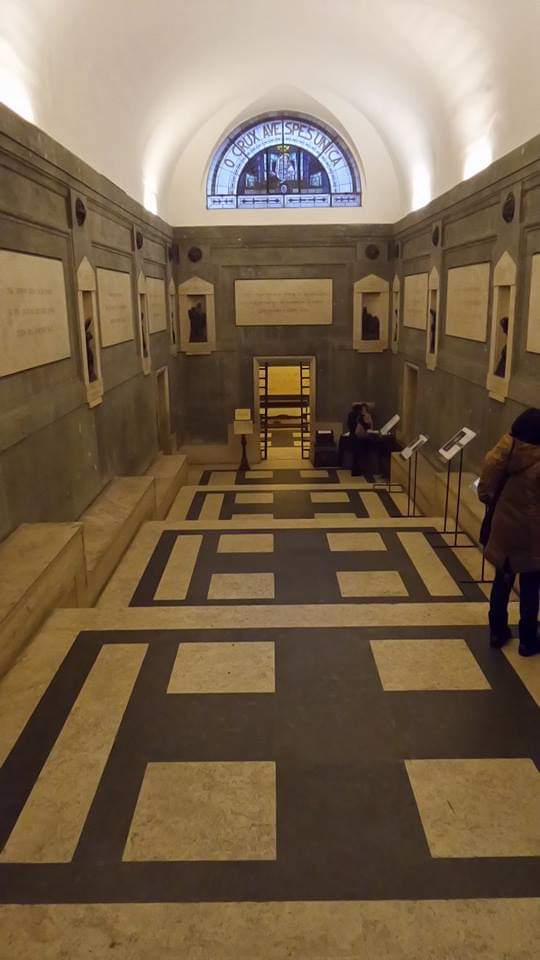 Egeria even pointed out that deacons closely guarded the relics because one devotee “is said to have bitten off and stolen a portion of the sacred wood.”
Egeria even pointed out that deacons closely guarded the relics because one devotee “is said to have bitten off and stolen a portion of the sacred wood.”
Egeria’s account should corroborate the “legends” of Church fathers like St. Ambrose who claimed in 395 that Pilate’s original superscription (titulus) was found by Helena still attached to the Savior’s cross,
St. John Chrysostom also in the late 4th century mentioned the titulus in his sermon: “Pilate wrote a title . . . and put it on the cross. And there was written, ‘JESUS OF NAZARETH, THE KING OF THE JEWS.’ After the burial of the cross … it was likely that it would be discovered in later times ..” This indicates that Chrysostom had knowledge of the discovery of the True Cross by Helena.
The Titulis Crucis could be found in the Chapel of the Passion Relics at Santa Croce in Gerusalemme.
Also at the Chapel of the Passion Relics is an exact replica of the Shroud of Turin. It is stretched out on the wall at eye level and strikingly lit, so as to provide pilgrims and tourists a chance to scrutinize and to compare between relics and shroud, said to be the burial clothes of Christ.
But of course the Shroud of Turin is another bone of contention not only among nonbelievers and critics, but even among believers themselves, who seem to miss the account of the very first Easter by John, “the apostle whom Jesus loved.”
According to the Gospel of John, the apostle checked the sepulcher twice and seeing the burial shroud and the “sudarium” (burial veil on the face) neatly folded beside the empty tomb, “He saw and believed.” INQ








































